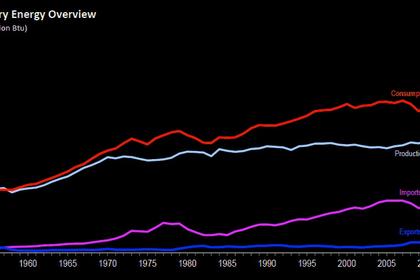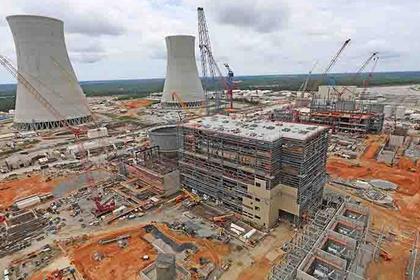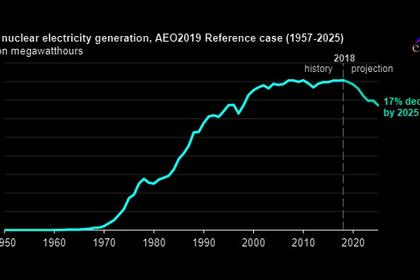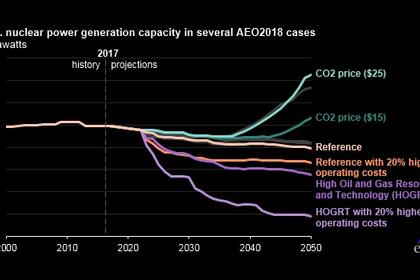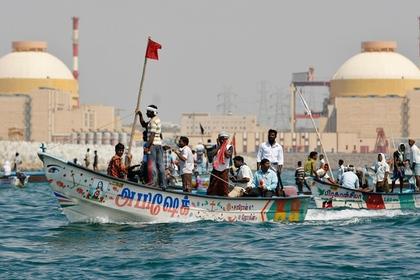
U.S. NUCLEAR COMPETITIVENESS
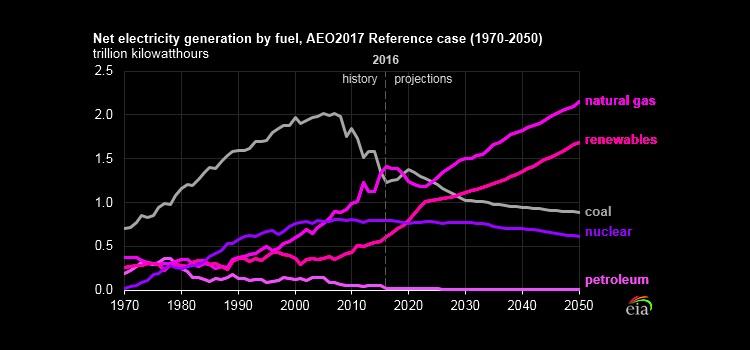
WNN - US nuclear plants are performing better than ever before - but now is the time to act to ensure the benefits that nuclear energy provides are protected, Nuclear Energy Institute (NEI) president and CEO Maria Korsnick said in her 2019 State of the Industry address.
Nuclear is the largest source of clean energy in the USA, and the nation's nuclear plants are working more efficiently than ever, Korsnick said, adding they are "economic engines" for the communities they serve. In addition to new projects, such as the Vogtle units under construction in Georgia, she highlighted the application of developments such as digital technology, 3D printers, big-data analytics, and artificial intelligence to upgrade existing plants for extended operation.
"This time next year, the first-ever second licence renewal applications could be approved for another 20 years - extending a plant's lifespan to 80 years," she said.
Innovations including small modular reactors and micro-reactors "are making nuclear possible in all kinds of places where larger plants simply can't meet communities' needs", she said, praising the passage of US legislation to support nuclear innovation and advanced technology. The Nuclear Energy Innovation and Modernisation Act, which supports the establishment of a licensing framework for next-generation advanced reactors, was signed by US President Donald Trump in January.
She said the US nuclear industry must remain internationally competitive. Nearly two out of every three reactors under construction around the world are being built by Russia or China, she said. "They are making massive investments, expanding their domestic fleet, and developing new technologies. Their efforts to promote nuclear power internationally are core parts of their foreign policy ... and America is falling behind," she said. "Other countries, from Poland to the Czech Republic to Jordan, are also planning to build or expand nuclear - and we need to be at the front of the pack."
She identified export financing as a critical priority for the US to remain competitive. "Without a fully functioning Export-Import Bank, US nuclear suppliers can't even compete in a global market on international tenders. This year, we hope the Senate confirms a quorum on the bank's board and we hope Congress will reauthorise the bank itself," she said.
The forthcoming US International Development Finance Corporation must be allowed to support nuclear energy projects, and the US State Department should continue its efforts to engage cooperatively with the longer-term nuclear energy markets, she said. "As our diplomats have said, we can pursue nonproliferation and competitively export civil nuclear power at the same time. They're independent and mutually reinforcing."
Competitiveness is not defined only by what happens abroad, Korsnick said. "For too long, here at home, we have had to answer to a false choice: clean or reliable, one source of energy or another," she said. "But it's also false to claim we can ever get to a solution without nuclear," she added.
Failing to protect the existing nuclear fleet means "at best" replacing carbon-free nuclear with a different carbon-free source, and "at worst", giving ground to carbon-emitting resources, she said. "That doesn't make sense. We need to preserve and grow all clean generating sources of electricity."
In the absence of a comprehensive federal policy, states are taking a leadership role, Korsnick said, pointing to actions taken by New York, Illinois, Connecticut, and New Jersey to preserve nuclear power in order to meet their climate goals.
"Let me be clear: Saving nuclear plants is not a bailout. It is not a subsidy. It's helping to right wrongs in an increasingly distorted energy market. It is a recognition that we must value nuclear energy in the same way we value other zero-carbon generation. And it is a necessary part of any responsible plan to build a clean energy future," Korsnick said.
Policy actions to preserve nuclear capacity from premature shutdown and to give innovators and investors confidence that there will be a market for their new nuclear technologies was not a partisan issue, she said.
"It's a simple fact that when nuclear plants close, states are forced to turn to dirtier sources for their energy, and emissions go up. ... The answer to the climate crisis won't be as simple as replacing carbon with renewables and batteries. The answer must include nuclear or it's no answer at all," she said.
"The math is simple, really. If we want to stop the surge of polluting emissions, we have to start investing more in making our most reliable energy option even better. Protecting our energy, economy and environment means that nuclear isn't optional at all."
-----
Earlier:
